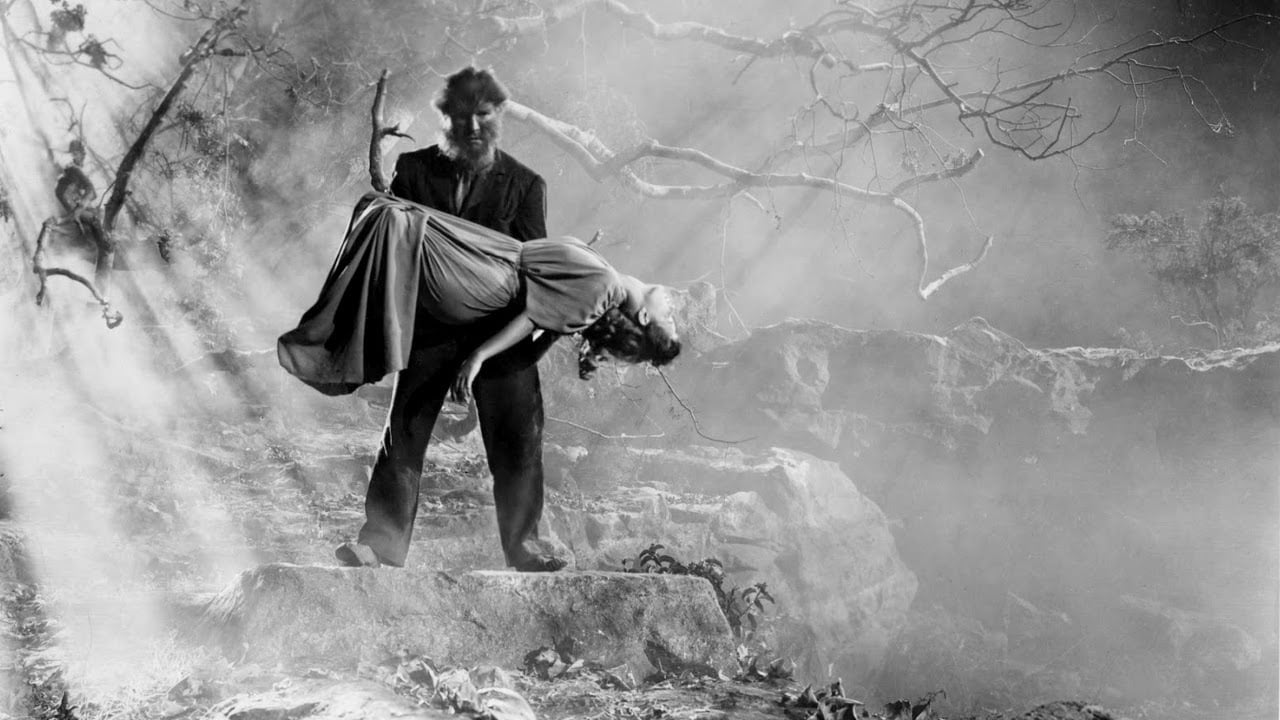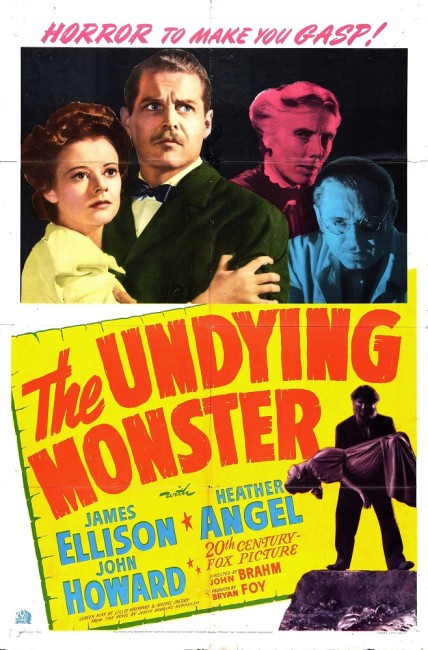USA. 1942.
Crew
Director – John Brahm, Screenplay – Lillie Hayward & Michael Jacoby, Based on the Novel by James Douglas Kerruish, Producer – Bryan Foy, Photography (b&w) – Lucien Ballard, Art Direction – Lewis Creber & Richard Day. Production Company – 20th Century Fox.
Cast
James Ellison (Robert Curtis), Heather Angel (Helga Hammond), John Howard (Oliver Hammond), Bramwell Fletcher (Dr Jeff Colbert), Heather Thatcher (Cornelia ‘Christy’ Christopher), Aubrey Mather (Inspector Craig), Halliwell Hobbes (Walton)
Plot
Hammond Hall on the coast of England at the turn of the 20th Century. Helga Hammond hears animals howling at night and rushes out in search of her brother Oliver who was walking home. He and a local woman are found fallen down the side of the cliff. The wounded Oliver is taken back to Hammond Hall where rumours circulate that they were attacked by the legendary Hammond Monster. Robert Curtis, a detective specialising in forensics at Scotland Yard, is brought in to investigate and believes an animal of some type was responsible. Curtis begins an investigation of those at Hammond Hall in an effort to get to the bottom of the mystery.
The werewolf is a creature that goes back for centuries in mythology. It first appeared on screen in The Werewolf (1913), which is now lost, and Wolfblood (1925), the first still existing film. The first sound treatment was Universal’s WereWolf of London (1935) but the one that caught off with the public was The Wolf Man (1941) starring Lon Chaney Jr. This defined what has now become regarded as werewolf mythology – the full moons, the silver bullet etc. (For a more detailed overview see Werewolf Films). Along with RKO’s Cat People (1942), which is essentially a werewolf film but with black panthers instead of wolves, this presaged a fascination with animal transformations over the next few years. Amid this, The Undying Monster was Hollywood’s third werewolf movie, appearing a mere eleven months after The Wolf Man.
From the moment the film opens, director John Brahm captivates with the vividness of his visuals. The black-and-white photography looks absolutely extraordinary in the modern dvd restoration. There are incredible sets – like the mansion with a stained glass window that stands some 25 feet high or the venture down into the crypt that has biers with elaborately carved human and animal figures on them. The main room of the hall has a massive fireplace and Brahm stages shots looking out from behind the lit fire.
The opening scenes cast the setting as England (where the actors’ accents waver back and forward between English and standard American) at the turn of the 20th Century (which would have only been forty years in the past for the filmmakers). There is talk of a family curse and howls heard on the moonlit night before a fiercely determined Heather Angel sets out on a buggy with rifle in hand to save her brother. This takes her along a starkly depicted bare clifftop and then having to conduct a rescue from down the bottom of the cliff. The black-and-white photography is some of the exciting work in any film of this decade. If The Wolf Man had come with half this style, it would have been transformed from an efficient studio picture to an all-time classic.

The main problem that The Undying Monster has is that after such a promising opening is has no idea what to do with its story. It then falls back on being no more than a regular murder mystery with a group of people gathered at a big old mansion, a series of murders occurring and the party trying to work out who among those present is the werewolf. This type of murder mystery plot was very popular on the Broadway stage during the 1910s/20s and spilled over onto film soon after. However, it causes The Undying Monster to become dull, talky and prosaic. It is a sad case of a film with huge artistic grasp but a total conceptual failure as to what to actually do once it has its story set up.
The werewolf whodunnit was subsequently conducted with Amicus’s The Beast Must Die (1974) and the videogame adaptation Werewolves Within (2021).
Director John Brahm would go on to make several mad killer films with the Jack the Ripper film The Lodger (1944) and Hangover Square (1945), both starring Laird Cregar, and The Mad Magician (1954) with Vincent Price. He also contributed a number of classic episodes to the original The Twilight Zone (1959-63) and was one of the uncredited directors on the lost world film Siren of Atlantis (1948).
Trailer here
Full film available here


